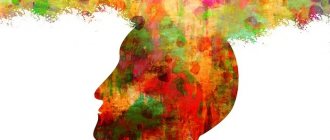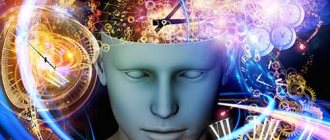What is self-awareness
Self-awareness is a certain attitude of a person towards himself, awareness of himself, his place, interests, experiences, behavior and others. This is not a given, but a result of development.
The source of the development of self-awareness is the generalization of a person’s knowledge about other people, comparison of their experiences with one’s own (life, professional, love). The more self-awareness develops, the more his inner world opens to a person.
Self-concept is the result of a person’s self-awareness, that is, a person’s theory about himself. Moreover, the self-concept can take more private forms, for example, being professional.
Criteria for self-awareness
There are four criteria that help understand the meaning of self-awareness
- Distinction from the environment, that is, awareness of oneself as an autonomous individual in relation to the social and physical environment;
- Awareness of activity;
- Awareness of oneself “through another.” That is, what a person sees in others, he perceives as a reflection of his own qualities;
- In order to evaluate oneself from a moral point of view, it is necessary to have reflection, that is, awareness of one’s internal experience.
The structure of self-awareness
Self-awareness includes three elements.
Cognitive (self-understanding)
It is characterized as a person’s idea of his abilities, appearance, temperament, and so on. That is, we are talking about self-knowledge as an element of self-awareness.
Emotional-evaluative (self-attitude)
It assumes an adequate assessment of one’s characteristics, that is, self-love (self-acceptance), self-respect, self-criticism, self-esteem, self-control and more.
Behavioral or volitional (self-regulation)
It is expressed in the desire to be understood and accepted by society, to gain respect from others, and to acquire a certain status.
Self-actualization
Self-actualization is not so much part of the structure of self-consciousness as inextricably linked with it. It can be characterized as a person’s desire to maximize the identification and development of personal characteristics and capabilities. This is the need for constant self-improvement and disclosure of one's potential.
Self-esteem
Self-esteem allows a person to evaluate his own strengths, characteristics and regulate behavior in accordance with the results. Self-esteem can be adequate, underestimated or overestimated. The last two types have a destructive effect on the personality and lead to internal conflicts. Self-esteem at any age is influenced by external assessment, the only difference is the strength of this influence.
Level of aspiration
This is the desired level of self-esteem, that is, it is closely related to the previous component and the ideal self (more on this in the next paragraph). The level of aspirations determines the possible level of achievement of an individual and the development of his abilities. Expressed in the difficulty of the goal of the activity.
Self-awareness and self-esteem of the individual
Self-awareness influences the self-esteem of the individual, which is a mandatory attribute of the psyche. It is important for a person to perceive himself in a certain way. What grade will be given largely depends on the people around him, parents and the person himself, when he will be able to influence himself.
Self-esteem influences a person’s behavior, his attitude and relationships with people around him. In the same situation, people with different self-esteem will behave differently:
- Inflated self-esteem causes an individual to extol his own importance to others. He considers himself ideal and perfect, above everyone else. He is proud, never admits his own mistakes and gaps, and is lazy. He may also exhibit violent and aggressive behavior patterns.
- Low self-esteem makes you think of yourself as worthless. The individual becomes shy, indecisive, unsure of himself, shy. He never achieves his goals, so he often sets them so that they can still be achieved (that is, he underestimates them). Very critical of himself. With low self-esteem, a person cannot do without outside support, does not realize his talents, and exaggerates his own failures.
- Adequate self-esteem forces an individual to look at himself objectively, evaluate his talents, not extol himself, and respond adequately to everything. Also, a person takes failures calmly.
The structure of the self-concept
At the same time, if we consider the product of self-consciousness - images of the Self, we can distinguish:
- I am real (as I am now);
- I am ideal (what I can become in accordance with my capabilities);
- I am fantastic (what I could become if it were possible).
The contradiction between the ideal self and the real self can serve as both an impetus for self-development and cause personality disharmony. It is worth noting that self-awareness is a dynamic structure. She is prone to changes and transformations of self-images.
In some theories there is a broader classification of self-images. Stands out:
- I am real;
- I am the ideal;
- Self-potential;
- I am personal;
- I-activity (professional, non-professional).
In other works, for example, Sh. Samuel, you can find the concept:
- I-bodily;
- I-real (present, actual);
- Self-dynamic;
- I-fantastic;
- I-probable;
- I-idealized;
- I-represented;
- I-ideal;
- Future (possible) self.
I am corporeal
Each person has a sense of his own body, which may differ from what is shown in the mirror. This refers to signals sent to the brain about the location of body parts, their shape and length. Within the framework of the I-bodily, we can additionally distinguish:
- real perception in terms of subjective functionality;
- internal factors caused by personal experiences or difficult situations;
- social factors, that is, environmental reactions and the interpretation of these reactions by the individual;
- the ideal body image as a result of the combination of all factors, comparison and a person’s perception of his body.
Real Me
The totality of a person’s ideas about himself at a given moment in time (as he seems to himself). However, this idea does not necessarily correspond to objective reality. The present self provides flexibility in reactions in response to changing environmental conditions. It allows you to choose personal goals, behavioral strategies, claims, and more.
Self-dynamic
Reflects the personality’s ideas about it, but in projection, that is, about what a person wants to become (goal). Depends on a person’s social status, opportunities and successes. The dynamic self is prone to changes, which are influenced by the successes and failures of the individual, identification with significant and ideal (in the person’s mind) people, ideas about desired roles and status.
I'm fantastic
Essentially, these are a person’s dreams, ideas about what he would be like if everything were possible. As a rule, this component exists only until adolescence, and as a person grows older, it begins to actively collapse.
I'm perfect
A person’s ideas about what he should become, based on the learned norms and values of society. Depends on the moral development of the individual, moral maturity and socialization. It is formed in the process of a person’s identification with people (heroes) whom he admires.
If the ideal self does not transform into the dynamic, and then into the present, then, most likely, it will disintegrate completely. This is dangerous with disappointment and frustration.
I am possible (future)
A person's ideas about what he can become. Most often it differs from the ideal self. It is formed on the basis of a person’s real position, real status, opportunities and role.
Idealized self
A person’s ideas about what he would like to be right now, how he would like to see himself. This is an incoming component that depends on the specific situation.
Self-represented
Images created and exhibited by a person specifically for display in order to hide undesirable (negative in his opinion) traits, qualities of the present self. The represented self plays the role of protection and adaptation.
Most often, the imagined Self is close to the ideal Self, but if these components differ and do not come close, then problems arise in a person’s relationships, and later the person is subject to disappointment and frustration. A sign of such inconsistency and incipient frustration is embarrassment.
I'm fake
It represents a distorted “I-real”, that is, self-deception of the individual. With frequent reproduction of false but desirable personality traits:
- afraid of negative self-esteem;
- expects negative attitude from outside;
- incapable of actions that nurture self-respect.
From the false self, many protective mechanisms of the personality are activated, which ultimately acquire a pathological character. All self-knowledge is distorted, and then the knowledge and perception of interpersonal relationships.
Developing Self Awareness
The essence of developing self-awareness can be described through 3 components:
- The dynamics of how a person separates himself from his environment. Moreover, both as an organism, and as an individual, and as a person, and as an individual.
- The second component of the development of self-awareness is a change in self-control, that is, the ability to influence one’s activities. As a person grows and develops, a transition occurs from control of physiological reactions to control of consciousness.
- The third component is self-acceptance, the ability to adequately and differentiatedly assess one’s characteristics, advantages and disadvantages.
The formation of self-awareness begins with a person’s identification of himself with the world and other people, and ends with autonomy, that is, highlighting his individuality, distinctive features and accepting them.
- A child from 3 to 8 months actively learns about his body; at 7-8 months, attention switches to studying the immediate and distant surroundings. These are the first elements of developing self-awareness.
- The desire for autonomy gradually increases, which is reflected in behavior. But along with independence comes responsibility. In the second year of life, the child already acts as a subject of activity. He can act out of situation.
- A little later, the baby can be called an object and subject of self-knowledge. By the age of 3, a child is already familiar with his body and its characteristics, and has conscious emotions from which standards are formed.
- Preschool children are characterized by subordination of motives and awareness of themselves as the subject of relationships. By the age of 6, the social self is formed, which is manifested by a differentiated assessment, the desire to follow external standards and models or internal beliefs.
- At primary school age, the active development of the social self occurs.
- Adolescence is characterized by the desire to understand one’s individuality, but at the same time personal and social identity, that is, to determine similarity with other people or a group. By the end of adolescence, the orientation of the personality is formed.
- Youth is characterized by the development of will, self-control, and the construction of life plans. There comes greater independence and objectivity in judgment, along with this - a strong need for self-realization.
- Adulthood and old age are characterized by the implementation of plans and evaluation of results, the search for integrity. Personal growth also occurs through crises (age-related, individual).
Thus, the peak of development of self-awareness occurs in adolescence and young adulthood. D. Marcia identified 4 possible options for the formation of self-awareness:
- A foregone conclusion. An individual’s acceptance of responsibilities appropriate to gender and age, without going through a crisis of choice, that is, parents or other people decided for him. As a result of this, a person suffers from low self-esteem, but is not anxious and is attentive to the advice of other people.
- Diffusion. This style of identity, that is, self-awareness, is characterized by fragmentation as the desire to try everything without having a life plan, motives and goals. As a rule, this is typical for those who are afraid of becoming an outcast and do not want to take responsibility.
- Moratorium. This category includes active people searching for themselves. They are always at the center of decision making, their every action is highly emotionally charged.
- Identity itself. This is the highest stage of development. Individuals who have achieved it have made a choice, accepted responsibility for their own lives, strive to live and follow their convictions.
Levels of Awareness
Below we will discuss the three levels of self-awareness and how they affect a person's life. Even if you think you're living consciously, you can still find a lot of interesting things here. All people have moments when they do things on autopilot or make unconscious decisions. I deal with this every day and notice it in myself very often, although I try to control all my decisions.
I don't see a problem with the fact that we do many things on autopilot. The main problem I see is that at some point we get so used to it that we stop noticing that we do many things without thinking.
Level 1 – What are you doing?
I cannot boast that I am old and wise, but even in the 26 years I have lived, I have experienced many different emotions. I experienced betrayal, several moves, moving to another city, difficulties in personal relationships and conflicts with people close to me.
Now let's try together to remember everything that you have experienced over the past 30 days.
- How often have you had difficulties in relationships with people close to you?
- How often and how lonely have you felt?
- How often have you felt lost and unproductive?
- How often have you felt like you're not getting enough sleep or not eating enough?
- How often have you felt bad and lacked the strength to act?
- How often have you felt uncertain about your future?
- How often have you worried about your job or financial situation?
- How often have you accidentally hurt yourself? (cuts, bruises).
Chances are that if you think carefully about the last 30 days, you can find many such events. All this is very scary if you are just now realizing that there have been many similar events in your life.
Often we have to do things that we don't like, and sometimes even things that make us very angry. Sometimes we get stuck on the phone purely automatically, unconsciously, because we are used to it. If we start thinking about it, we will realize that there is nothing new or important there.
We often do things to dull the pain of our real problems. We even eat, get drunk and have sex, sometimes not because of our own desire to do this here and now, but to dull the pain of our current problems. If you think about it, people deliberately enjoy entertaining literature, games and music in order to at least temporarily escape from reality.
There's nothing wrong with trying to have fun and forget about your problems for a while. All this is necessary so that we can maintain our sanity.
We need to make sure that we are now consciously choosing entertainment and procrastination, rather than that procrastination is choosing us. We must be sure that we have already made our choice and are doing exactly what we really want. We need to know this because our distractions can consume us very quickly, so we need to stop and enjoy small portions of entertainment.
If you come home after work and turn on an episode of your favorite TV series, that's completely normal. It is completely abnormal if you took a day off from work to make your plans and then watched the series around the clock.
We all think we are in control of our time and know exactly how we spend it. Unfortunately, we are usually wrong. In fact, most people work no more than 3 hours a day, and the rest of the time the person just watches something else. We constantly feel like we spend much more time with our loved ones than we actually do. We always feel like we are underestimated, but we are not. It’s just that we are more accurately assessed from the outside, and we think that we are more productive and smart than we really are. People have very inaccurate estimates of themselves, their abilities and their time.
Don't judge yourself for all this, just accept this fact. This will help you better evaluate yourself and your abilities, and this will be the first step towards self-awareness.
Second level. What do you feel?
If you try to live mindfully, you often begin to notice that the more you are distracted from reality, the more you return to the emotions that you were trying to avoid. If we are angry, we should fight the reasons for it, and not try to distract ourselves from this emotion.
If a person is at the second level of self-awareness, he thinks a little differently. They have a very clear idea of the emotions they experience at one time or another. Some emotions can help us, while others can only hinder us.
Most people live their lives somewhere around the first level of consciousness. All they have to do is work, do what they are told, and indulge in watching soap operas in the evenings with a can of cold beer. If you disrupt their routine, they will immediately begin to realize that their life is not good enough for them. They begin to realize that they are not comfortable in their own lives. Although usually, if everything has stabilized for a person, he can live like this all his life and feel quite comfortable.
The second level of self-awareness is closely related to emotions and is therefore very uncomfortable for a person. It’s extremely unpleasant to realize that your life is so far from perfect that in some places it just annoys you. It is very difficult to accept the fact that sometimes emotions control us so cleverly that we do not notice it.
Learning to properly understand your emotions instead of suppressing them is quite difficult. But I don't advise people to focus too much on understanding their emotions. It is better to do this gradually, but constantly. You don't need to rush because your emotions will follow you throughout your life. You will definitely have time to explore your emotions.
Levels of self-awareness allow you to highlight your goals and plans for the future
Third level. What are you missing out on and not noticing?
The more aware you are of all your actions and emotions, the more you notice that you are far from perfect, and in some places even too bad. Most of our thoughts are simply a reflection of our emotions that we are experiencing directly at the moment.
A person at level 3 understands some important things, which allows him to better control his anger and all other emotions:
- Our memories are often faulty, especially when the memories are associated with certain emotions or feelings at a certain time. A person is not able to predict his feelings, thoughts and emotions in the future.
- A person tends to overestimate himself. As a rule, if a person has just started doing something, he greatly exaggerates the significance of his achievements.
- Controversial questions often reinforce a person's beliefs rather than allowing them to challenge them.
- Our attention is always more focused on those things, facts and events that we expect to encounter in a given place and at a given time.
- Most people will lie if it helps them improve their performance.
- People don't know how to evaluate statistics because they always rely on personal experience and results.
This list can go on for a very long time, but it all comes down to simple definitions that should always be kept in mind:
People can make mistakes
People can do stupid things
People seek personal gain
People can speak without wanting to offend or offend
There is nothing wrong with this, because all this is natural for humans. Most of the level three “problems” described are related to a person’s self-acceptance and perception of emotions.
Self-awareness in ontogenesis
In the previous paragraph, I already touched upon the connection between human development as a person and as an individual. In this part of the article I want to structure and summarize the development of self-awareness in combination with growing up.
Rudimentary self-awareness
Formed before the age of one year. Characterized by the child’s discovery of his Self.
Allopsychic self-awareness
Formed in 2-3 years. It is manifested by the child’s awareness of himself as an actor and the separation of his actions from the actions of other people.
Somatopsychic self-awareness
Formed by age 7. The child can independently evaluate himself, owns his body and undergoes bodily identification.
Autopsychic self-awareness
Adolescence and adolescence. It is assumed that by the age of 17, the formation of social and moral attitudes and self-awareness is completed. In the future, it does not develop, but changes.
Test with answers: “Activity, consciousness and self-awareness”
1. Personal self-awareness in psychology: a) the individual’s awareness of his own needs, abilities, motives of behavior, thoughts + b) setting to follow a predetermined life path c) analysis of committed actions in different periods of time
2. Consciousness as the highest form of mental reflection is characterized by: a) concreteness b) objectivity + c) objectivity
3. The psychological mechanism of self-awareness is: a) identification b) empathy c) reflection +
4. The first level of development of self-awareness is characterized by awareness of: a) biological needs + b) significant relationships c) level of aspirations
5. According to S.L. Rubinstein, self-awareness: a) precedes the development of consciousness b) develops simultaneously with consciousness c) is a stage in the development of consciousness +
6. Self-awareness can be defined as: a) level of aspirations b) self-image + c) increased attention to oneself
7. Consciousness and self-awareness arise and develop in parallel, according to: a) Bekhterev b) Wundt c) Sechenov +
8. Self-awareness as a stage in the development of consciousness, prepared by the development of speech and voluntary movements, was studied by: a) Vygotsky + b) Bekhterev c) Sechenov
9. The emergence of self-awareness is not connected with: a) with the process of differentiation of internal sensations b) with the process of differentiation of external sensations c) with an increase in involuntariness +
10. The property of self-generation of consciousness, its self-conditioning, manifests itself as: a) evidence b) subjectivity + c) reflexivity
11. The self-concept was formulated: a) in the 1950s. + b) in the 1970s. c) in the 1960s.
12. As a special kind of reality, consciousness does not have the property of: a) intentionality b) internality + c) reflexivity
13. A person manifests himself through actions, he is: a) formed + b) revealed c) participates
14. A specific type of human activity aimed at knowledge and creative transformation of the surrounding world, including oneself and the conditions of one’s existence: a) activity + b) need c) action
15. A normal (ordinary) state of consciousness is characterized by the following level of mental activity: a) medium + b) high c) low
16. What the activity is aimed at is called: a) behavior b) object + c) subject
17. Which of the following is not included in the concept of “activity”: a) motive b) means c) temperament +
18. Primary and reflexive consciousness proposed to distinguish: a) James b) Farthing + c) Wundt
19. Unlike the behavior of animals, human activity is of the following nature: a) instrumental b) transformative + c) adaptive
20. A feature of creativity as a type of human activity is: a) satisfying biological needs b) using natural substances c) creating something new that has no analogues in nature +
21. The founder of the functionalist approach to the study of consciousness is: a) James + b) Bekhterev c) Wundt
22. Generalization of the properties of objects in concepts is typical for activities: a) material-productive b) spiritual-theoretical + c) spiritual-practical
23. According to the theory of reflection, consciousness: a) a substance that can exist outside the human body b) a liquid that is formed during the thought process c) a product of the brain +
24. Determining the possible consequences of changes in preferential payments to socially vulnerable citizens is an activity: a) prognostic + b) cognitive c) practical
25. What is the name of activity, the distinctive feature of which is that as a result, qualitatively new material and spiritual values are created: a) communication b) creativity + c) cognition
26. A feature of creativity as a type of human activity is: a) satisfying biological needs b) using natural substances c) creating something new that has no analogues in nature +
27. The psychological characteristic of consciousness is not: a) reactivity + b) motivation c) intentionality
28. In the structure of consciousness, along with thinking, there are: a) innate ideas b) atom c) emotions +
29. The state of the mental life of an organism, expressed in the subjective experience of events in the external world and the body of the organism, as well as in a report on these events: a) consciousness + b) knowledge c) cognition
30. Which instinct is the main one: a) freedom b) self-preservation + c) dominance
Mistakes in the development of self-awareness
If the crisis is not resolved correctly, then identification will be inadequate. We can distinguish the following variants of the abnormal development of self-awareness, which affect the individual and his relationships with the world:
- Avoidance of close interpersonal relationships.
- Fear of change and growing up, inadequate understanding of time, blurring of its boundaries.
- Wasting your own potential, productive and creative abilities. Inability to activate internal resources and concentrate on one activity.
- Refusal of self-determination and self-knowledge, selection of negative role models.
Separately, I would like to consider the option of developing an unfavorable self-concept, which is characterized by personal uncertainty, fear of rejection, and low self-esteem. This type of self-awareness is dangerous in the following ways:
- low self-esteem, which is reflected by social degradation, failure, aggressiveness, crime and asociality;
- reaction of adaptation in difficult situations, which is dangerous with the risk of being drawn into asocial groups and being influenced from outside;
- inadequate perception, which is reflected both in a person’s analysis of his actions or appearance, and in the analysis of external situations.
Other disorders in the development of self-awareness include:
- underdevelopment of self-awareness, that is, dependence on other people;
- distorted self-image;
- egocentrism (a distorted view of one’s role in the world);
- pathologies (mental disorders and diseases).
Functions of self-awareness
The main function is to make the motives and results of actions accessible to the individual, to allow him to evaluate himself. Self-awareness ensures conscious adaptation of the individual to the environment.
Other features include:
- ensuring internal consistency (sometimes self-awareness may not even allow some external factors into the inner world if they do not correspond to something from the Self);
- interpretation of individual experience, that is, the nature of the perception of the situation (self-awareness and self-concept explain why two people can see the same situation differently, that is, the self-concept not only interprets our behavior, but also “explains” to us the meaning of behavior other people);
- defining expectations, that is, what should happen (closely related to acceptance and non-acceptance, as well as vision of the situation).
Having understood the essence and structure of self-awareness, as well as its functions, you can easily understand and notice how different and unique each person is. “I expected one thing, but got another,” “I wanted the best, but it turned out as always,” “I didn’t mean it,” “I know that I’ll look like a fool again,” “Come on, he wasn’t flirting. I’m sure that I can’t please anyone” - all these are games of self-awareness and its 3 main functions.










